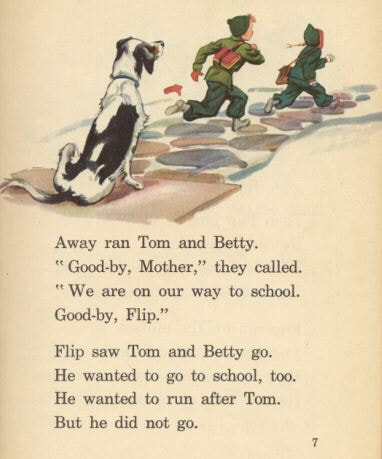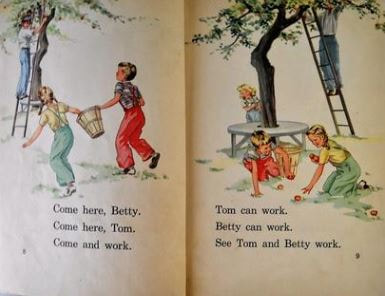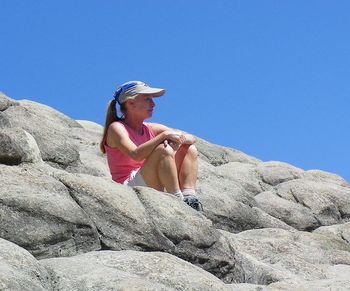 Who didn’t learn to read alongside Tom, Betty, and Flip? Who didn’t learn to read alongside Tom, Betty, and Flip? As many of us find ourselves with time to pick up a book, Peggy Cooper, of northern Kentucky, recalls first learning to read. Her ruminations may even inspire you to start putting words on a page. Peggy is the co-editor of Celebrate a Community, reprinted by Murky Press and available now from Amazon. It was 1960. I’d been ill and out of school because of some childhood illness. When I returned to school, there was catching up to do. Mrs. Johnson brought me to the front of the class so that we could do some work together while the rest of the class did other things. In the front of that classroom on a table perfectly sized for a first grader stood a huge book, a book that was taller than I was. I was going to learn to read. I knew my numbers and letters. I liked hearing stories and looking at the pictures in books. I liked school and Mrs. Johnson. She had taught my father when he first attended the one-room schoolhouse just south of Chasetown. He could read before he even went to school because he’d watched and listened and learned alongside his brother, John, who was two years older. Because he already knew first-grade learning, my father managed to skip that grade. I didn’t understand what I was supposed to do. It always helped to see other children do things first. Cousin Barbie, best friend and confidante, sat in the desk in front of my desk at school. She lived in town. She was wise in the ways of the world. She always knew what to do. We would talk and whisper and plan and play together. She was not at the table in the front of the classroom with me. I was lost, in more ways than one. Mrs. Johnson pointed to the picture in the book. The boy, Tom, was running. Yes, I could see the picture of Tom running. There were big black letters too. S-E-E. Yes, I knew those letters. What did those letters sound like? They sounded like an ess and an eee and another eee. How did they sound together? What did that mean, sound together? And what did Tom have to do with those letters on the page? Mrs. Johnson had been teaching for many years. In some way that now seems magical, she helped me make the connection between those letters on the page and how those letters could be put together to make words that told a story. I don’t remember how long she worked with me that day or over the next several days; I know it was a struggle. Mrs. Johnson knew how to help: SEE! See Tom. See Tom run! Then Betty joined the story, and Susan, and Flip, the dog. I could read! Triumph! Now I am putting letters on a page to tell stories myself. The stories, and the writing, are often like that experience of learning to read—a struggle to create meaning from a jumble of things that don’t seem to be connected. Sometimes the stories are about people who have lived and worked together and had a life before I was even born, remembered because it, the story, or they, the people, were significant in some way. Sometimes the stories are memories from my own life, savored because they were important to me. Sometimes the story evolves out of a photograph or a document, again, saved for a reason, and sometimes saved across generations. The essence of the story is the feeling it provokes, and often the meaning is caught up in the reason that the history, or the memory, or the photo or document, was saved. But, how to find that meaning, put it into words, and then share it? Feelings are elusive—and sensitive—things. Meaning is equally elusive, and personal. And the personal is, oftentimes, private, delicate, and special. A decision must be made—share or not? Struggle sums up the process. I’m still working on the triumph.
0 Comments
Your comment will be posted after it is approved.
Leave a Reply. |
Details
Archives
June 2023
Categories
All
|



 RSS Feed
RSS Feed